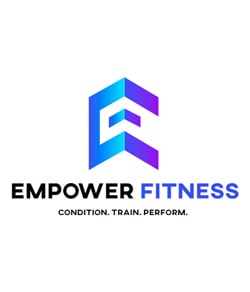There’s a common misconception that strength training reduces running efficiency by making runners too bulky and heavy. So, it often gets a bad rap in the running community.
The truth is, many successful runners will have some form of strength training incorporated into their training programme, and today personal trainer from  , Lizzie, is here to explain why. She also gives you some pointers so you know the dos and don’ts when you start strength training yourself in a pursuit of improving your run performance.
, Lizzie, is here to explain why. She also gives you some pointers so you know the dos and don’ts when you start strength training yourself in a pursuit of improving your run performance.
Strength training makes you more powerful
Your muscle power determines your ability to generate force quickly and this is crucial for runners if they want to run faster.
A study showed that by training participants with explosive strength exercises (movements that require maximal force in minimal time), participants were able to cover long distances in a shorter period of time.
Enhances running posture
Fatigue towards the end of long runs can cause running form to break down. Poor form not only slows you down, but also opens doors to potential risk of injury and this is when having a strong core can help. Working on building up a strong core will enhance and maintain good posture.
-jpg.jpeg)
Strengthens connective tissue
Put simply, connective tissues are the glue that supports and binds together the tissues and organs of your running body. Resistance training has been found to increase the strength and mass of connective tissue and this not only improves their ability to prevent unwanted injuries, but also their overall performance and function as well.
How to Incorporate Strength Training Into Your Routine
Do the right exercises
The main aim of strength training for runners is to become stronger. For runners, there’s an optimal way of training, and that’s not by spending hours at the gym working on a bodybuilding programme.
A runner’s strength session will differ from a bodybuilder’s. To facilitate your goals as a runner, it should consist mostly of functional, all over body movement patterns such as squats, deadlifts, and upper body pushing and pulling exercises.
Single leg exercises such as lunges are also beneficial, with some specific work around the core and glutes as this will help with stabilisation and injury prevention when running.
-jpg.jpeg)
Start light and focus on safe progression
If you’re relatively new to strength training, lifting too heavy too soon can lead to potential injury by stressing your body too much, especially if you are planning more running sessions the same week.
Body weight exercises for 3 sets of 10 reps is a good starting point to ensure that you’re able to gradually adapt to a change in your training regime.
Your aim moving forward is to then decrease the number of reps and increase the number of sets to work towards strength and power, and even possibly start to include some olympic lifting movements into your training.
Note: Olympic lifting movements are highly technical. Look to get the advice of a qualified coach to design you a specific periodised programme and ensure correct lifting technique.
Don’t overdo it
“You shouldn’t feel like you have been hit by a bus after your strength session in the gym, you should feel stronger and energised ready for your next running session or race.”
This is Lizzie’s top tip for all her performance clients.
Typically, if runners don’t feel the burn or get a sweat on during a session, they feel as though the workout hasn’t been effective. If this is the case for you, you need to change your mindset to ‘less is more’
You’ll get enough endurance work on the road when you’re clocking in the mileage from your runs – there is no need to add more endurance work at the gym!
Circuits, bootcamps and CrossFit style sessions (although great fun) aren’t ideal to optimise running performance they can lead to muscle fatigue which makes you most prone to injury.
Are you a new runner looking to enhance your running performance?Visit Empower Fitness'  to find out more.
to find out more.
Contributor:

 helps real people achieve real goals.
helps real people achieve real goals.
Empower Fitness is a fitness company built to be completely client-focused. A place where all clients can come, work out and feel completely comfortable, giving them the confidence to smash their fitness goals, and not compare themselves to anyone else.
They focus on Strength and Conditioning coaching to a wide range of clients, from those wanting to enhance their sporting performance, get stronger after an injury, or become the best version of themselves.

.jpg)

-jpg.jpeg)
-jpg.jpeg)


